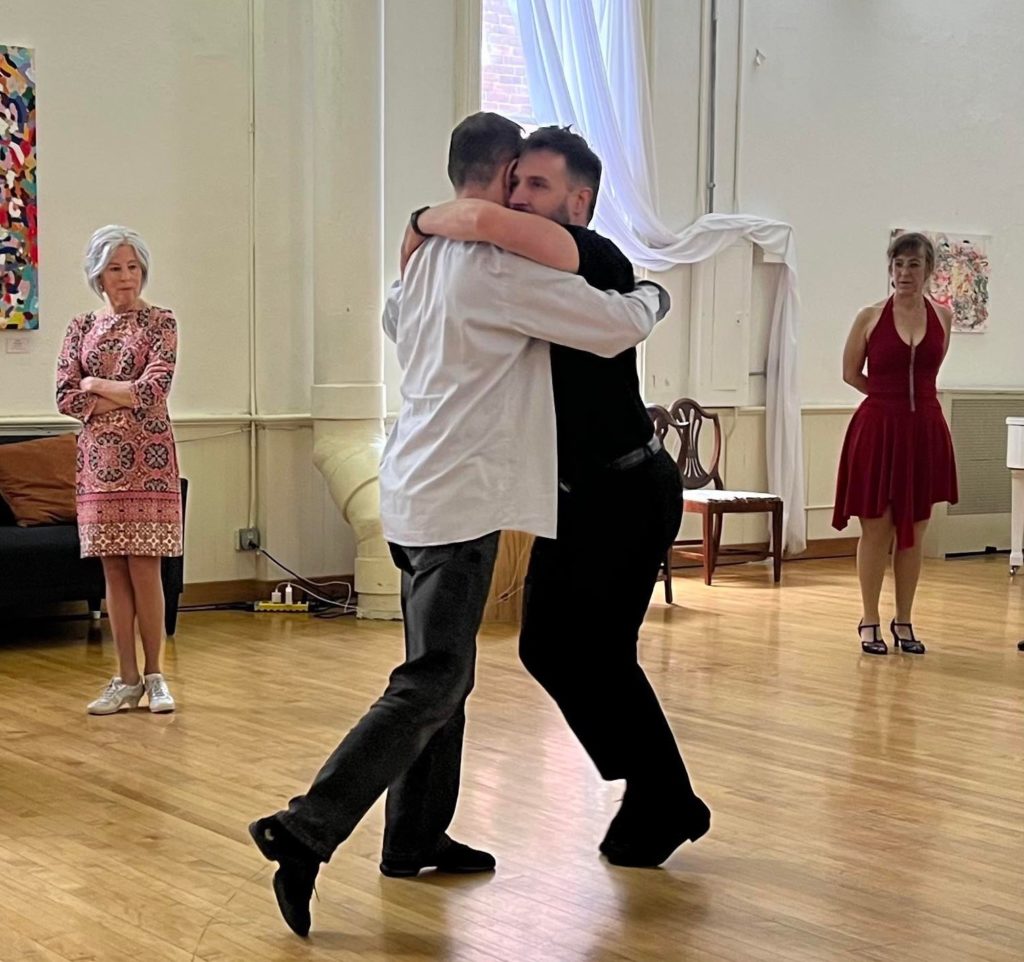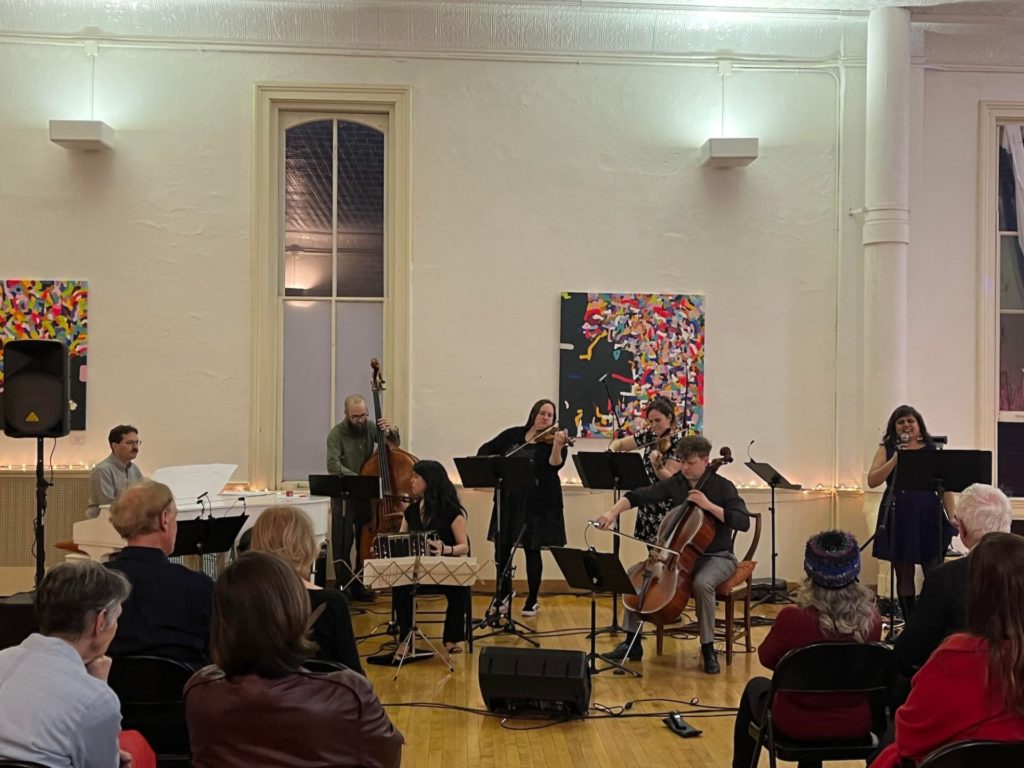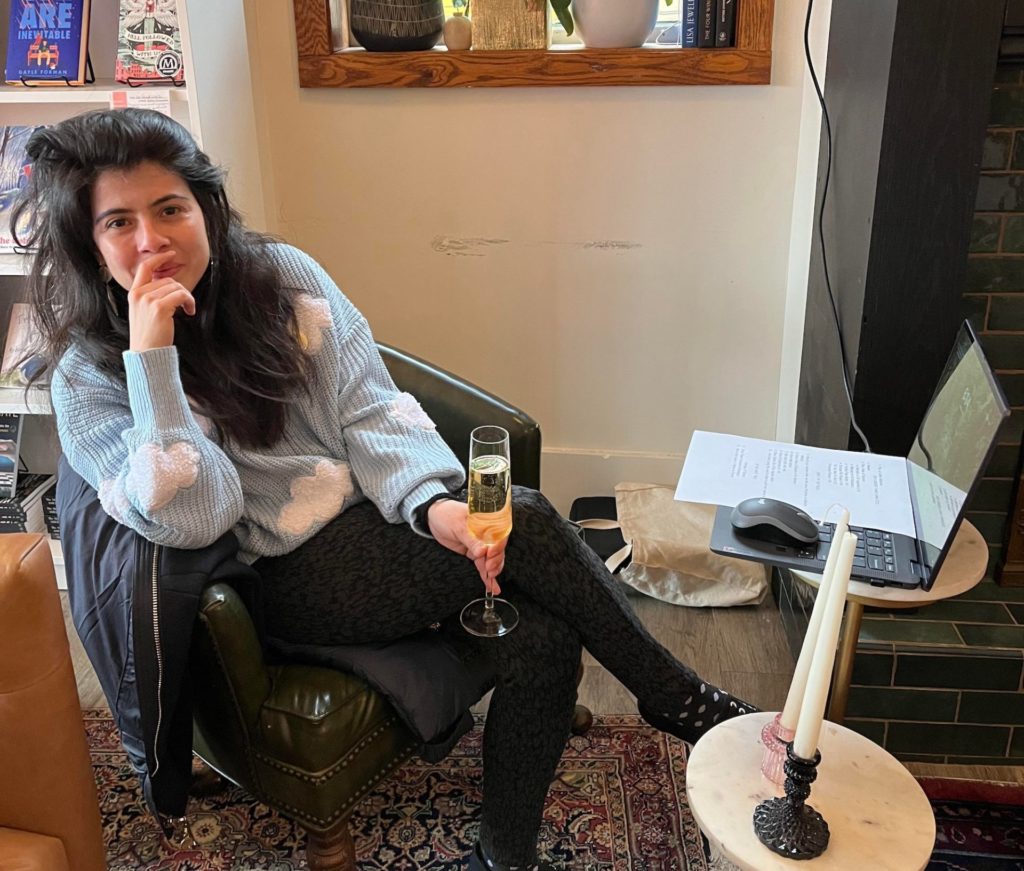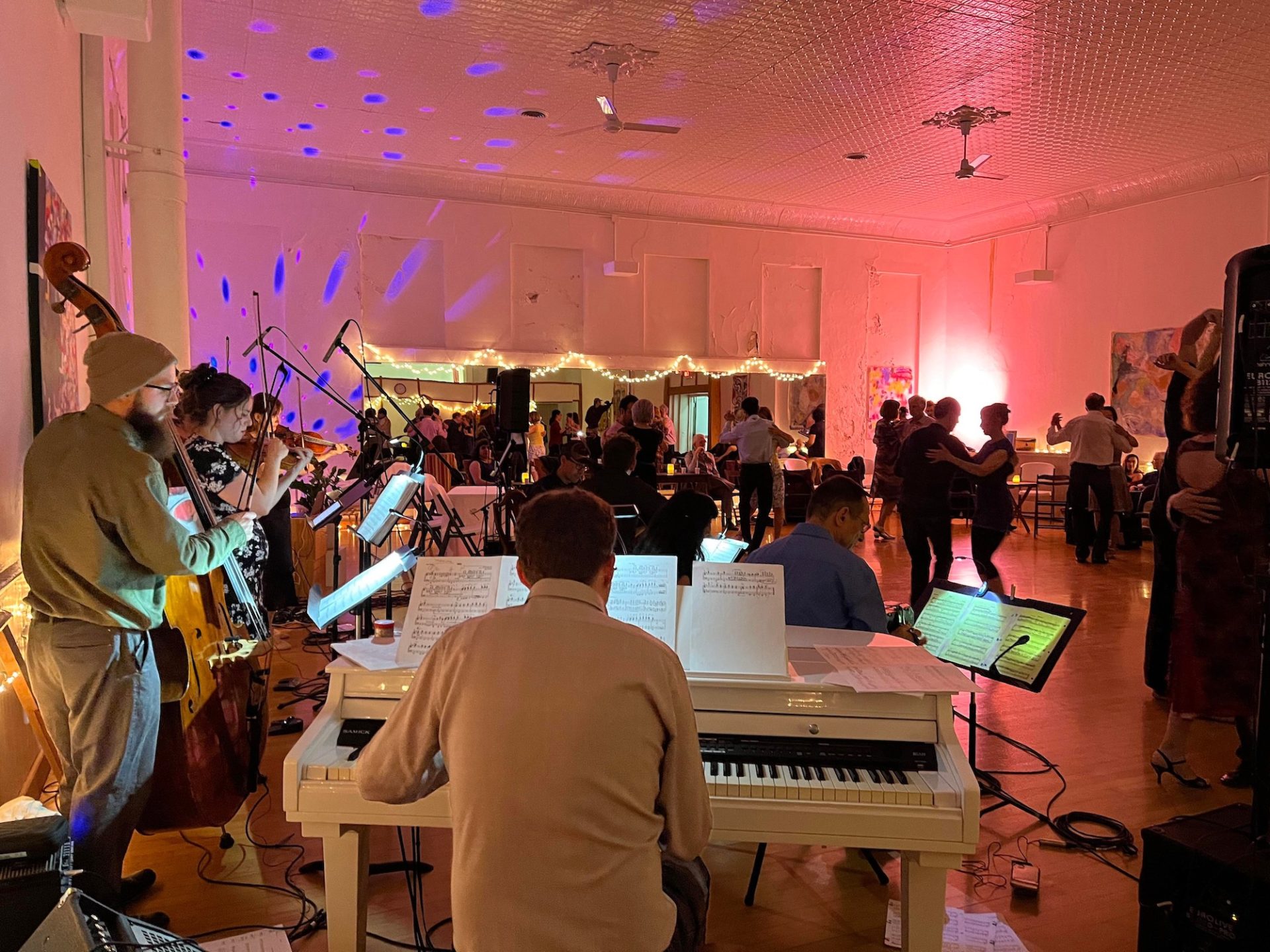Argentine tango has a strong presence in many cities and towns internationally, including, of course, Champaign-Urbana. The 2023 CU Tango Music Festival brought together local and visiting tango musicians, instructors, and dancers. Tango is many things. It’s often associated with drama, passion, and eroticism. At the same time, tango brings joy and fosters creativity and community. For many, the local and international networks of tango music and social dancing become a home away from home. This year’s festival highlighted many facets of tango through events for musicians, dancers, and people curious about tango culture and its possibilities. Organized by En-Chi Lin, Amanda Ramey, and Jessie Stark, the CU Tango Music Festival was clearly a product of love, dedication, and a desire to share tango culture with the Champaign-Urbana community.
The desire to reach out to the community permeated both the musical and dancing components of the festival. The festival opened with “Tango for All/Tango por todxs,” a free event that included a concert for all ages and a short presentation on tango instruments and music by the band La Siembra Tango. It was hosted by RegCakes in Lincoln Square Mall. La Siembra Tango gave the presentation in English at 10 a.m. and bilingually in Spanish and English at 11 a.m. Hernan Prieto, a Chicago-based tango instructor, dancer, and DJ, then taught two workshops that started at 1 p.m. at Urbana Dance Company. The first workshop, titled “The Tight Space,” was a beautifully crafted lesson for all levels. Prieto kept the vocabulary for this workshop simple, pared down to a handful of basic yet elegant moves we used on a small, partitioned-off section of the floor. Tango is often danced in crowded and cramped spaces. When your movements are restricted, they become more significant. Prieto emphasized how to be creative using a limited vocabulary in a small space. He encouraged us to attune ourselves to minute gestures and to find space and time to embellish simple movements.

I asked Prieto why he travels to teach workshops in Urbana-Champaign and West Lafayette, Indiana, another regional town where tango has a well-established home. He replied that he sees a pronounced eagerness and a hunger to learn in tango communities smaller than those in places like Chicago and New York City. He also said that he enjoys teaching in university towns because his students there tend towards an intellectual way of learning and ask thought-provoking questions. Prieto brings immense charisma, enthusiasm, and skill to teaching tango. His two workshops complemented each other well; the pragmatic, technical concerns of “The Tight Space” blended into the more philosophical lesson titled “Tango Musicality.” Central questions of this second workshop included: How can dancers embody what they hear in the music? What should they listen for? The local and visiting musicians who make up La Siembra Tango — Sumi Lee (piano), Heyni Solera (bandoneon), Amanda Ramey (violin), Matt McConahay (bass), and Maxfield Wollam-Fisher (cello) — provided the music or, rather, the sounds for “Tango Musicality.” The musicians isolated rhythms that underlie tango, and kindly played them many, many times. Prieto mediated this dialogue between musicians and dancers, helping dancers to hear and translate the dynamics of the music into movement.
Also at 1 p.m., Maxfield Wollam-Fisher (cello) and Matt McConahay (bass), along with Jessie Stark and Amanda Ramey (violins), led a workshop for strings and bass at the Community Center for the Arts. This workshop introduced local musicians who had never played tango before to the music’s techniques, styles, and culture, including the role it plays in tango musicians’ lives. In a conversation with Ramey, she said that the workshop was intimate and incredibly fun. Moreover, it was an extension of Ramey’s goal in organizing this festival: to introduce the Champaign-Urbana community to the tango music that she and other tango musicians love, so that more people will love it too.

At 7 p.m., Urbana Dance Company hosted the festival’s concert, where La Siembra Tango and our local tango orchestra Bandoneon Massacre performed. Chairs and unfamiliar faces filled the dancefloor. The local tango community is knit tightly enough that you recognize everyone. This was a different crowd. No one was dancing. It was exciting. When I asked musicians Heyni Solera, Sumi Lee, and Amanda Ramey about the thought process behind having a tango concert before they performed at the festival’s milonga, they said that not dancing was the point. The pieces the musicians had selected showcased tango music written after 1950, which is not typically used in social dancing due to its complexity. The musicians talked about the general lack of exposure to tango music and their desire to, as Solera put it, “open their audience’s ears to what’s going on now in Buenos Aires.” Solera added that she disagrees with the emphasis on dancing to everything. The musicians wanted to attract a different audience. They wanted to create a space for stillness and listening. The music was exquisite.
After a short break to rearrange the room and visit with each other, the milonga began at 9 p.m. Dancers quickly filled the floor. Tango has its own vocabulary of movement, that is, building blocks that dancers use to improvise when dancing socially. The floor becomes a conversation between each individual dancer and the music, between dance partners, and between all the dancers on the floor. I find beauty in the hiccups, the slight miscommunications. They become collaborative moments of getting back on the right foot, sometimes literally. They highlight the improvisational aspect of the dance. When you have no choreography, you have to constantly adapt, listen, and speak. Prieto, who DJ’ed the milonga, was collaborating alongside the dancers. He said that he never prepares pre-made playlists; instead, he responds to the energy on the dancefloor. La Siembra Tango and Bandoneon Massacre played two sets with songs largely taken from the “Golden Age” of tango (~1930-1950). Live music adds a different texture to social dancing. You have to listen and respond even more actively than with recorded music, since musicians make each song their own, just like dancers do. The milonga concluded well after its scheduled end time of midnight when the organizers and DJ decided to call it a night.

The 2023 CU Tango Music Festival had an encore: Heyni Solera’s lecture “A GPS for Tango Listening: What Makes a Tango a Tango?” Tajal Patel and Melih Sener, who host queertango classes biweekly at the IMC, organized this event at The Literary on Sunday, April 30th. The audience cozily gathered around a section of the café to listen to Solera speak about aspects of tango music and their implications for dancing. This lecture was adapted from the first of her four-part lecture series on tango music and it focused on the melody types found in tango. Of the many points that she made, one stood out the most for me: Go to more concerts. You’ll hear music better.








